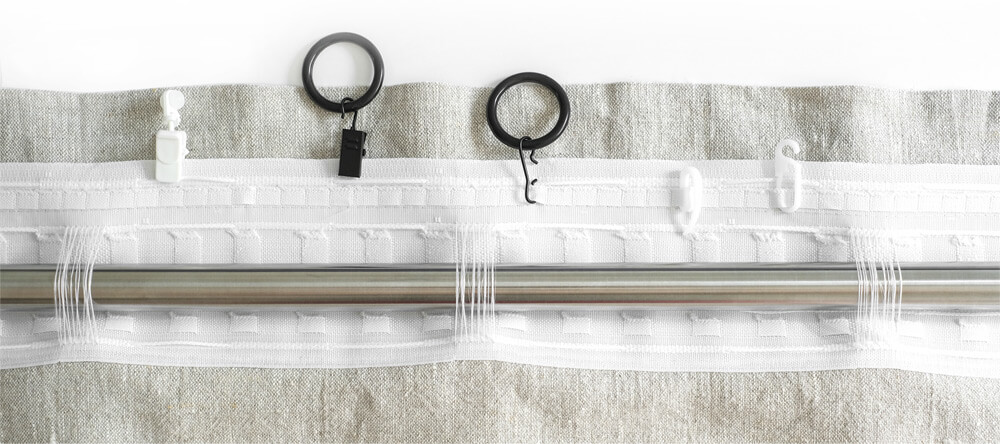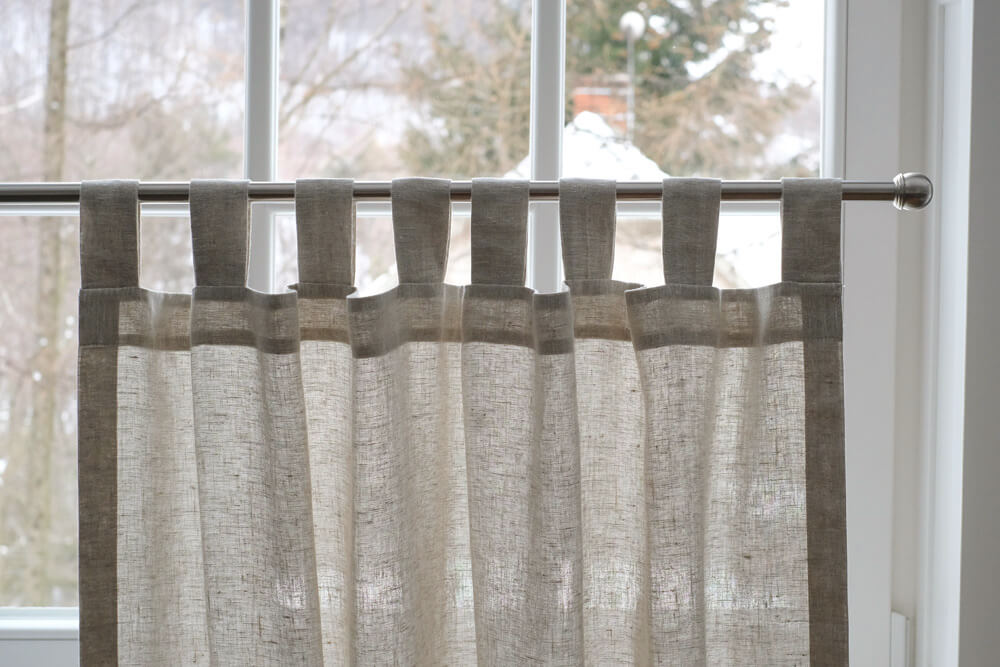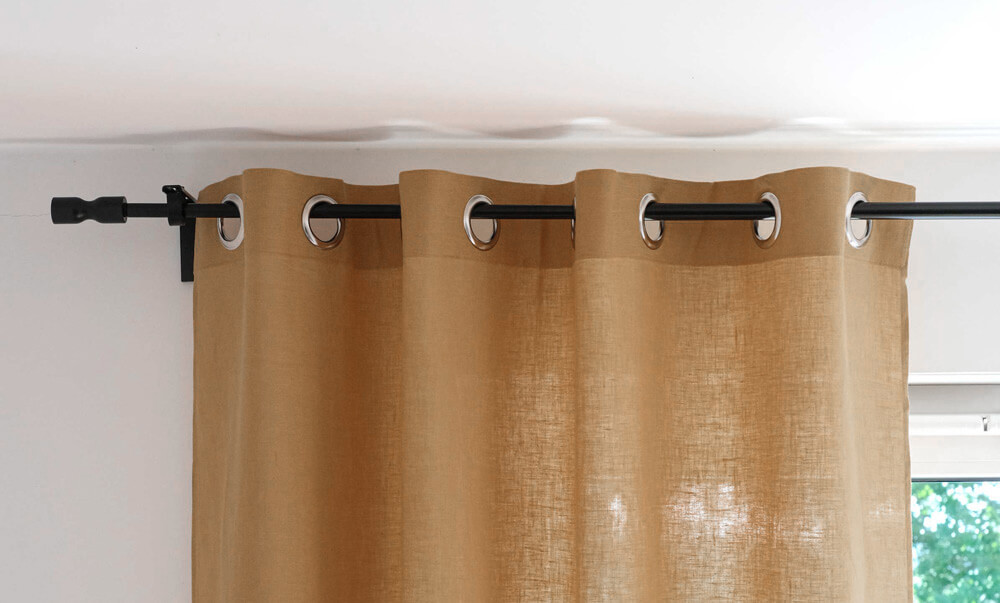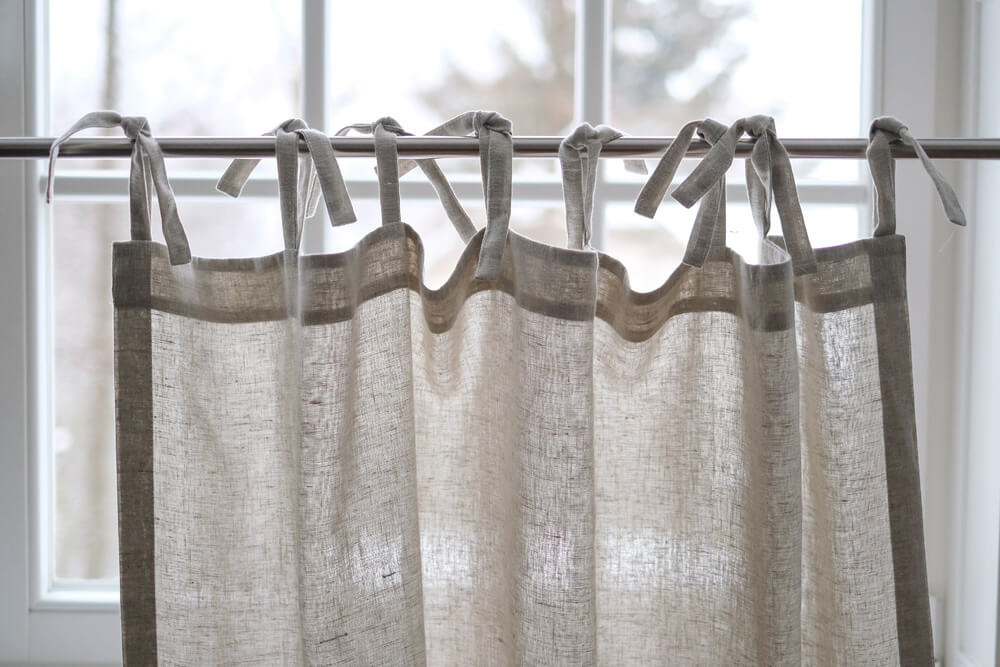-
Linen Curtains
-
Table Linen





-
Linen Bedding
BY CATEGORYLinen BeddingUseful linen bedding of natural colors and classic white shade: pillowcases, duvet covers, flat and fitted sheets.Show
 Linen Duvet SetsUseful linen bedding of natural colors and classic white shade: pillowcases, duvet covers, flat and fitted sheets.Show
Linen Duvet SetsUseful linen bedding of natural colors and classic white shade: pillowcases, duvet covers, flat and fitted sheets.Show PillowcasesUseful linen bedding of natural colors and classic white shade: pillowcases, duvet covers, flat and fitted sheets.Show
PillowcasesUseful linen bedding of natural colors and classic white shade: pillowcases, duvet covers, flat and fitted sheets.Show Linen Bed SheetsUseful linen bedding of natural colors and classic white shade: pillowcases, duvet covers, flat and fitted sheets.Show
Linen Bed SheetsUseful linen bedding of natural colors and classic white shade: pillowcases, duvet covers, flat and fitted sheets.Show Linen Fitted SheetUseful linen bedding of natural colors and classic white shade: pillowcases, duvet covers, flat and fitted sheets.Show
Linen Fitted SheetUseful linen bedding of natural colors and classic white shade: pillowcases, duvet covers, flat and fitted sheets.Show Linen Flat SheetUseful linen bedding of natural colors and classic white shade: pillowcases, duvet covers, flat and fitted sheets.Show
Linen Flat SheetUseful linen bedding of natural colors and classic white shade: pillowcases, duvet covers, flat and fitted sheets.Show Linen Throw PillowsUseful linen bedding of natural colors and classic white shade: pillowcases, duvet covers, flat and fitted sheets.Show
Linen Throw PillowsUseful linen bedding of natural colors and classic white shade: pillowcases, duvet covers, flat and fitted sheets.Show
-
Linen Fabric
BY CATEGORY
-
Kitchen Linen Set
BY CATEGORY
- Bread Bags
- Sale
Custom Linen Curtains
Table of Contents
- 1. How to Calculate the Correct Curtain Width?
- 1.1. Measuring the Curtain Rod Length
- 1.2. The Gathering Factor: Why Is It Important?
- 1.3. When Can the Gathering Factor Be Omitted?
- 1.4. Formula for Calculating Curtain Width
- 2. Choosing the Right Gathering Tape and Pleats
- 2.1. Universal Gathering Tape (85 mm / 3.35 in)
- 2.2. Pencil Pleat Tape (75 mm / 2.95 in)
- 2.3. Smock Pleat Tape (80 mm / 3.15 in)
- 2.4. Single Pleat Tape (50 mm / 1.97 in)
- 3. How to Calculate the Correct Curtain Length?
- 4. Recommendations for Choosing Curtain Length
- 4.1. Curtains Pooling on the Floor (H4)
- 4.2. Floor-Length Curtains (H3)
- 4.3. Short Curtains: Above or Below the Windowsill?
- 5. Why Varvara Home?
Guide to Measuring Custom Curtain Width and Length
Custom-made curtains are the best solution for your window. However, many questions often arise before ordering: How to measure the length correctly? How to calculate the width for a beautiful drape?
In this article, we provide practical tips to answer the most common questions—whether you order your curtains from our website or another sewing workshop.
1. How to Calculate the Correct Curtain Width?
To ensure curtains look harmonious and drape beautifully, it is important to calculate their width correctly. You need to consider the curtain rod length and the gathering factor (pleating).
1.1. Measuring the Curtain Rod Length
First, measure the length of the curtain rod—this is the area where the curtains will move.
1.2. The Gathering Factor: Why Is It Important?
Curtains are not hung as a flat fabric panel but are pleated. The degree of gathering determines the fullness of the curtain.
Depending on the fabric density, the following guidelines apply:
- Light, transparent fabrics (voile, sheer) – Factor 1.5-3
- Medium-weight fabrics – Factor 1.5-2.5
- Heavy fabrics (blackout, velvet) – Factor 1.5-2
The type of attachment also affects the gathering factor:
- Tap Top – 1.5-2
- Eyelets – 2
- Rod pocket – 1.5-2
- Tie Top – 1.5-2
- Gathering tape – 1.5-2.5 (depending on tape type)
1.3. When Can the Gathering Factor Be Omitted?
If the curtain is purely decorative and does not need to close the window, its width can match the curtain rod length. However, in this case, the curtain will lay flat without pleats.
1.4. Formula for Calculating Curtain Width
The width of a single curtain is calculated using the following formula:
(Curtain rod length ÷ QTY of curtains) × Gathering factor + 5 cm (2 in) overlap
Example: For a curtain rod of 3 m (118 in) with two curtains made of medium-weight fabric with eyelets, the calculation would be:
3 m (118 in) ÷ 2 × 2 + 0.05 m (2 in) = 3.05 m (120 in)
2. Choosing the Right Gathering Tape and Pleats
Each type of gathering tape has a specific gathering factor and affects the appearance of the curtain. Different tapes create different pleat styles, ranging from classic to decorative.
2.1. Universal Gathering Tape (85 mm / 3.35 in)
- Gathering factor: 1:1.8
- Material: 100% cotton
Features: Versatile and compatible with different curtain rods and tracks. If no gathering tape is selected when ordering, this tape is used by default.
2.2. Pencil Pleat Tape (75 mm / 2.95 in)

- Gathering factor: 1:1.5
- Repeat: 6 cm / 2.36 in
- Material: 100% polyester
Pleat effect: Creates fine, uniform "pencil pleats," ideal for classic curtains.
2.3. Smock Pleat Tape (80 mm / 3.15 in)
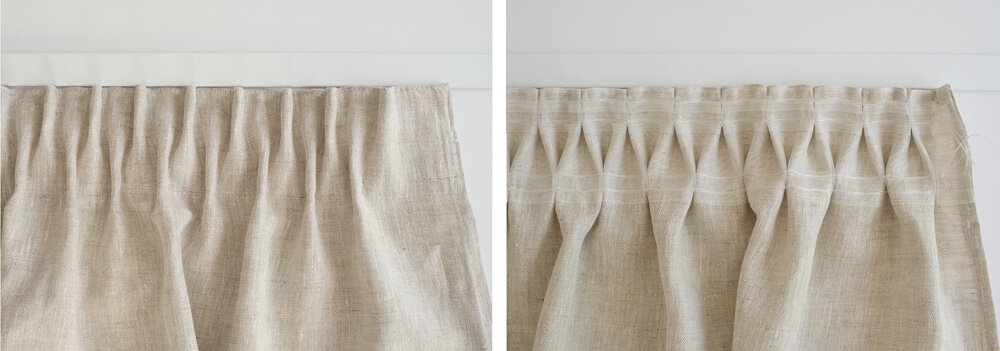
- Gathering factor: 1:2
- Repeat: 6.5 cm / 2.56 in
- Material: 100% polyester
Pleat effect: This creates elegant, tightly gathered pleats, giving the curtain a voluminous and decorative look.
2.4. Single Pleat Tape (50 mm / 1.97 in)
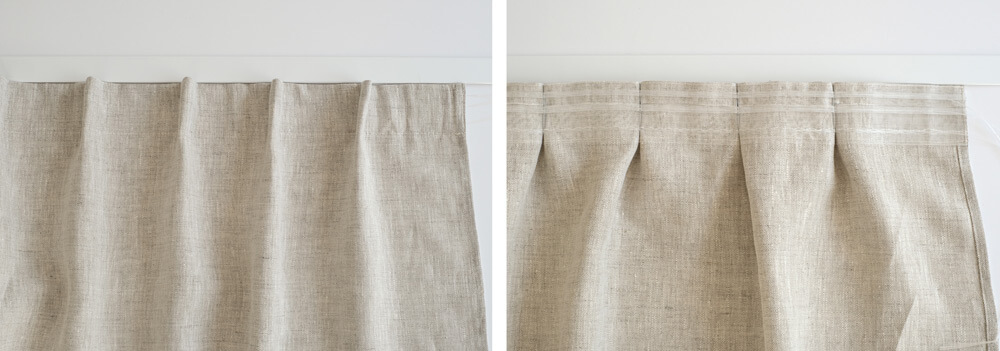
- Gathering factor: 1:1.5
- Repeat: 12 cm / 4.72 in
- Pleat spacing: 8 cm / 3.15 in
- Material: 100% polyester
Pleat effect: Forms single, uniform pleats, ideal for a structured and modern look.
Each of these gathering tapes affects the curtain’s appearance differently. When choosing, consider both the desired pleat style and the curtain’s functionality.
3. How to Calculate the Correct Curtain Length?
To determine the correct curtain length, first decide how the curtain will be attached to the rod or track. Ideally, the rod or track should already be installed before taking measurements. This prevents measurement errors and the need for adjustments later.
The curtain length is measured from the top to the bottom edge of the curtain. Below are the most common rod and mounting options:
3.1. Ceiling Track and Curtain Rod with Built-in Guide
For these systems, we recommend curtains with gathering tape or the flex system. The attachment is done via hooks or clips, which should remain hidden behind the curtain.
- Narrow ceiling track: If you have a narrow ceiling track, the curtain can cover not only the hooks but also the track. In this case, choose curtains that reach "from ceiling to floor" with minimal clearance from the floor.
- Wide ceiling track: If the track should remain visible but the hooks need to be hidden, the top edge of the curtain should start just below the track.
Important dimensions H1 and H2 for curtains with ruffle tape
We recommend providing the seamstress with measurement H1 (distance from the top edge of the curtain to the bottom edge of the hooks). This measurement helps determine the correct gathering tape height and whether a header is needed. A header is an additional fabric strip above the gathering tape that covers the track or other mounting elements.
Additionally, measurement H2 (distance from the bottom edge of the hooks to the floor) is required.
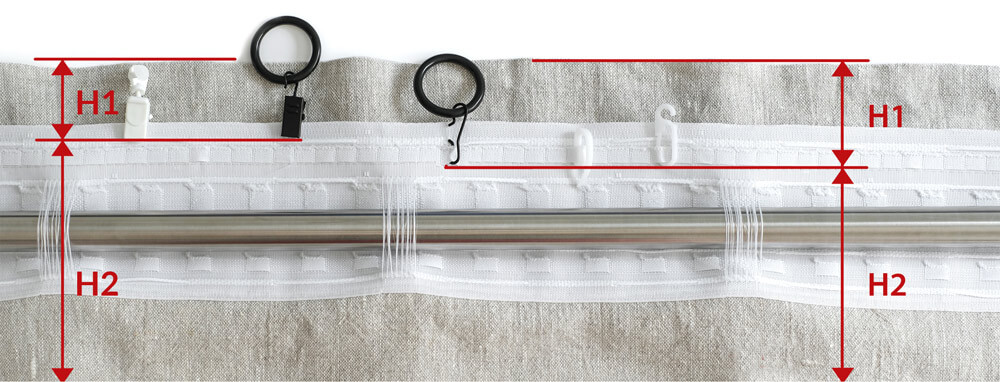
Curtain Ordering: When placing an order, please specify the total curtain length L.
- Floor-length curtain:
L = H1 + H2 – H3 (distance between curtain and floor)
- Curtain pooling on the floor:
L = H1 + H2 + H4 (extra fabric for floor pooling)
After placing an order, we will clarify the following measurements for curtains with gathering tape:
- H1 – Distance from the bottom edge of the hook to the top edge of the curtain
- H2 – Distance from the bottom edge of the hook to the floor
- H3 – Distance between the curtain and the floor
- H4 – Extra fabric for pooling curtains
These precise measurements help us create perfectly fitting curtains according to your preferences.
3.2. Curtain Rod or Wire System
For curtain rods and wire suspension systems, curtains with loops, eyelets, rod pockets, gathering tape, or the flex system are suitable.
3.2.1. Curtains Tap Top or Rod Pocket
The curtain length corresponds to the distance from the top edge of the curtain rod to the floor, minus a hygiene gap.
- Floor-length curtain:
L = H – H3
- Curtain pooling on the floor:
L = H + H4
Key measurements:
- H – Distance from the top edge of the curtain rod to the floor
- H3 – Distance between the curtain and the floor
- H4 – Extra fabric for floor pooling
3.2.2.Curtains with Eyelets
- Floor-length curtain:
- Curtain pooling on the floor:
- H – Distance from the top edge of the curtain rod to the floor
- H3 – Hygienic gap between curtain and floor
- H4 – Extra fabric for an elegant floor pooling effect
3.2.3.Curtain Tie Top
- Floor-length curtain:
- Curtain pooling on the floor:
3.2.4. Curtains with Gathering Tape
3.2.4.1. Attachment with Rings + Hooks/Clips
- For clips, the seamstress sews the gathering tape with a small gap so that the clip can be attached at the upper edge of the tape.

- Floor-length curtain:
- Curtain pooling on the floor:
3.2.4.2. Attachment via a Rod Pocket
- Floor-length curtain:
- Curtain pooling on the floor:
4. Recommendations for Choosing Curtain Length

4.1. Curtains Pooling on the Floor (H4)
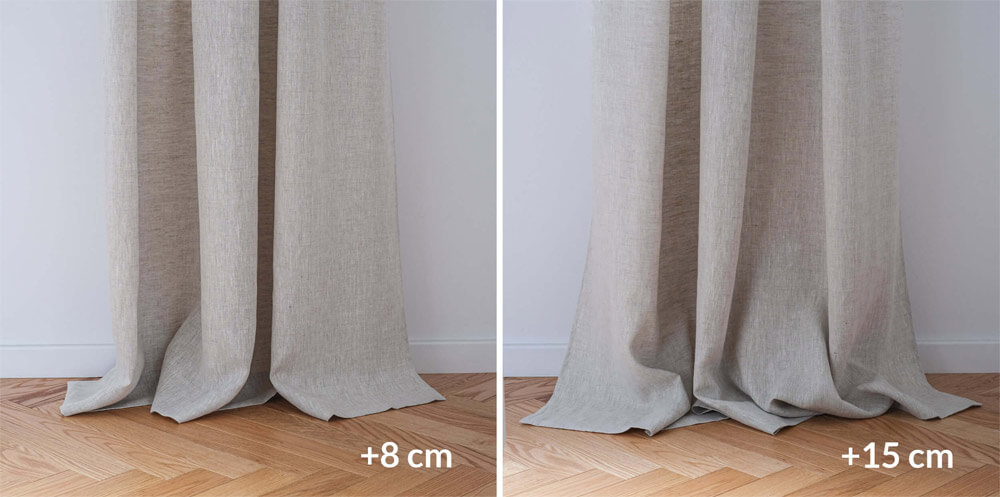
- Without regular draping, the fabric quickly loses its shape and collects dust.
- Uneven floors or loose fabric threads can make the appearance look untidy.
4.2. Floor-Length Curtains (H3)
4.3. Short Curtains: Above or Below the Windowsill?
- If the curtain ends above the windowsill, leave a 1–1.5 cm (0.39–0.59 in) gap for a neat appearance.
- If the curtain ends below the windowsill, the gap should not exceed 15 cm (6 in).
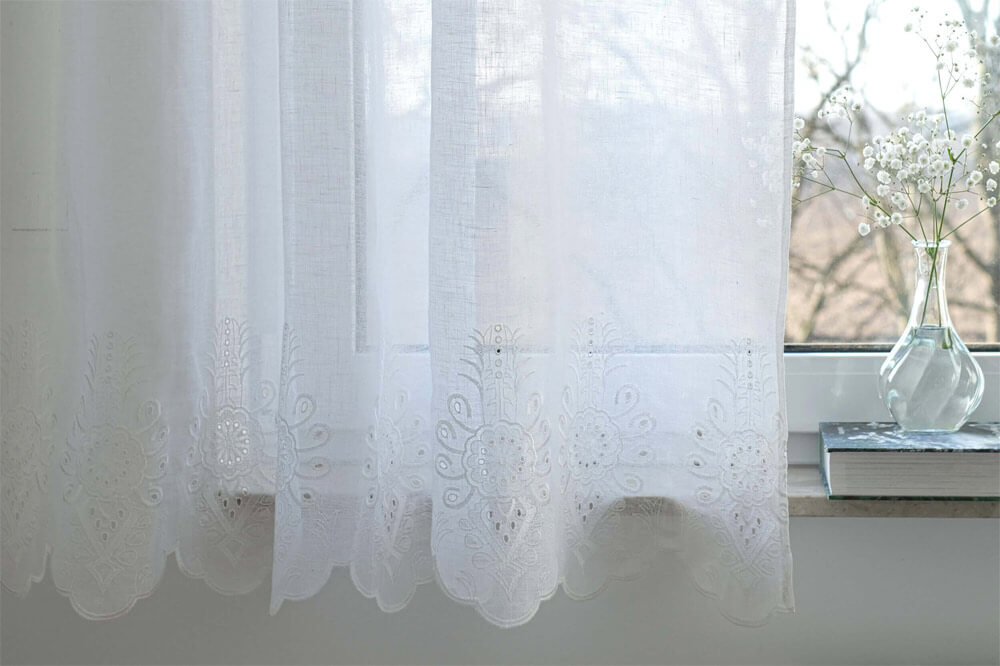
5. Why Varvara Home?
1. Precise Fit – No Surprises After Washing
2. Hand-Cut Fabric for Millimeter-Precise Fit
3. High-Quality Craftsmanship – Every Seam Matters
4. Custom Curtains That Last for Decades
- The desired density and color of the linen
- The model and mounting style
- The exact length – floor-length or decorative pooling








